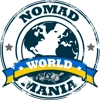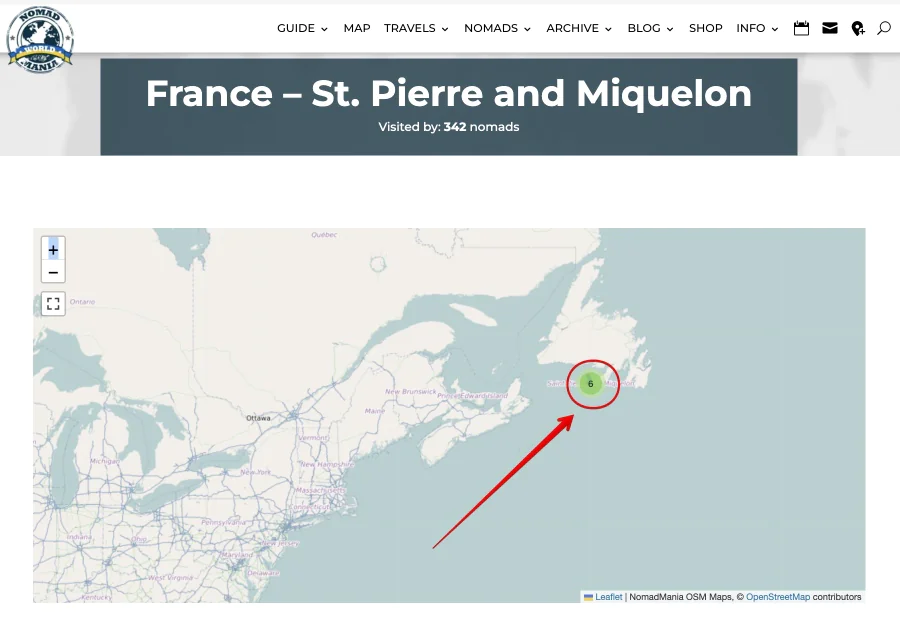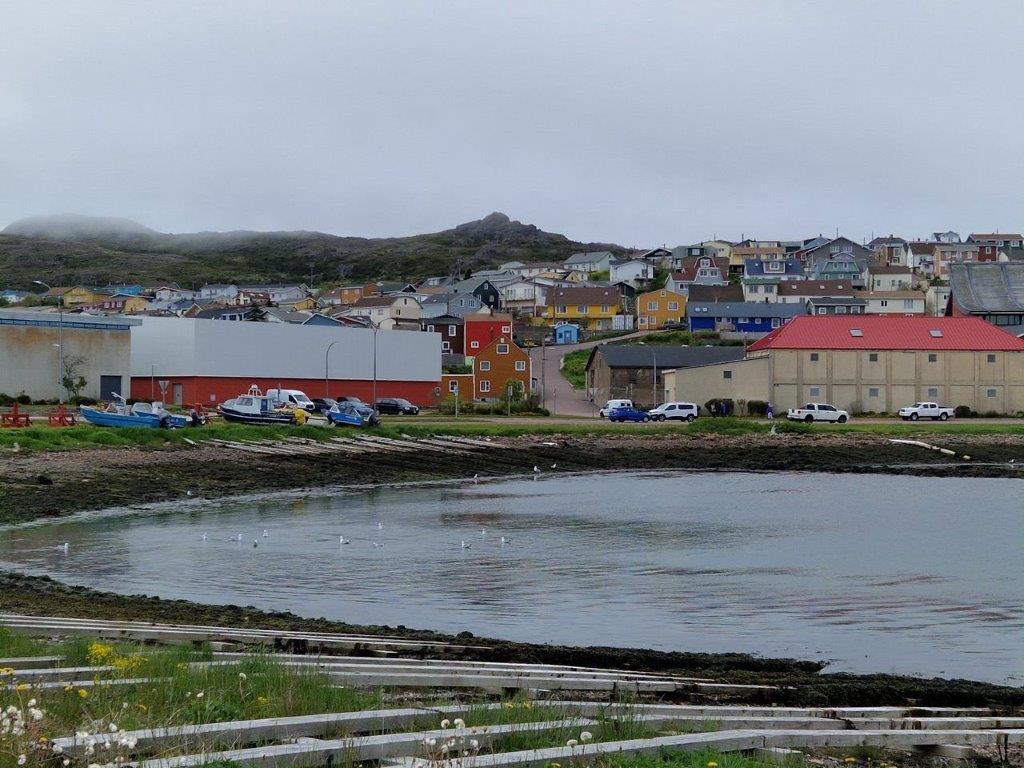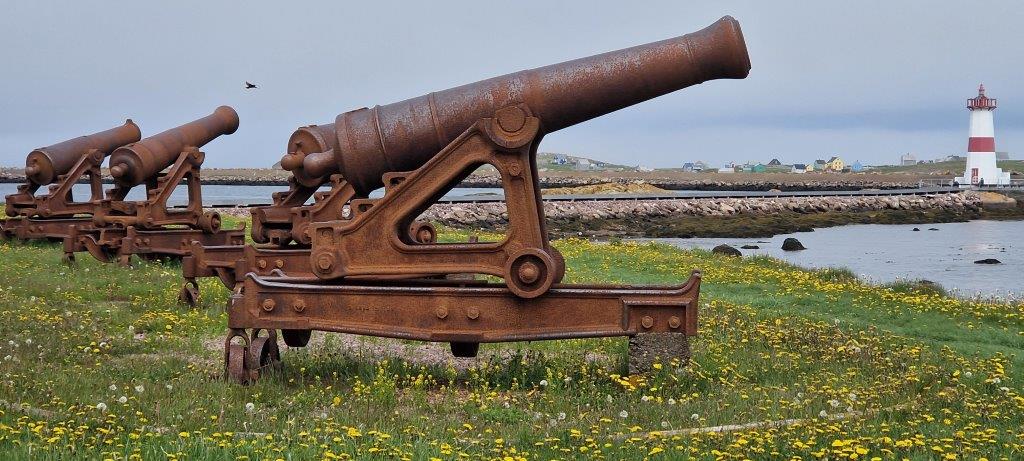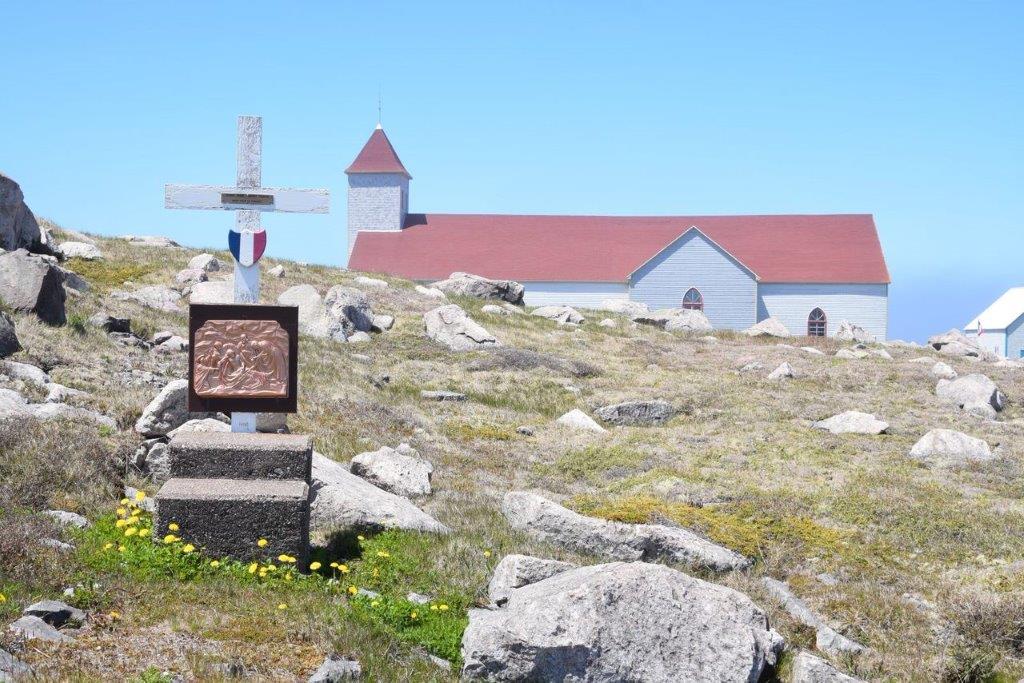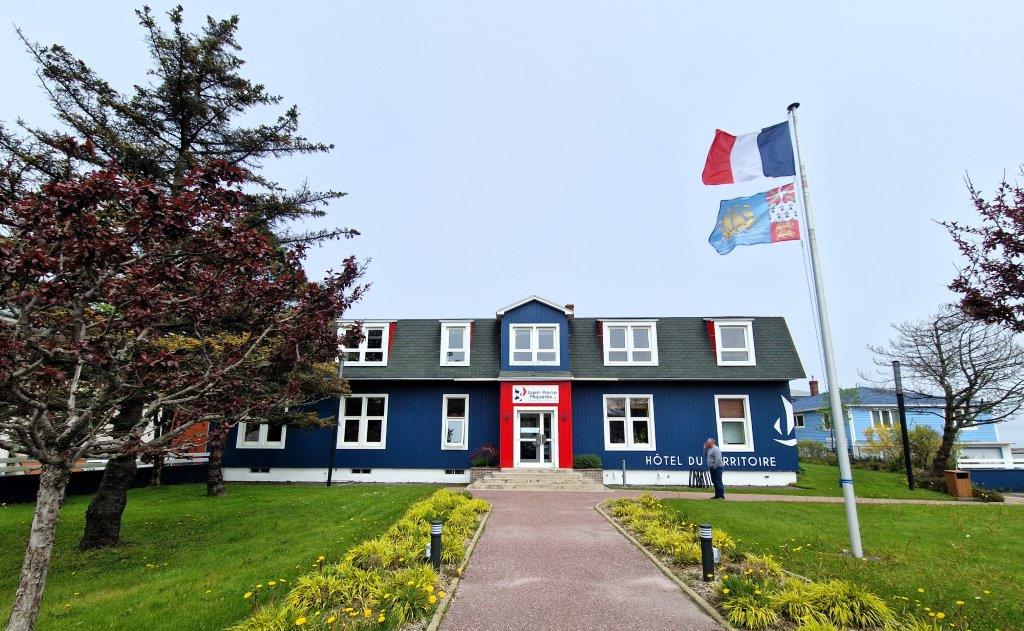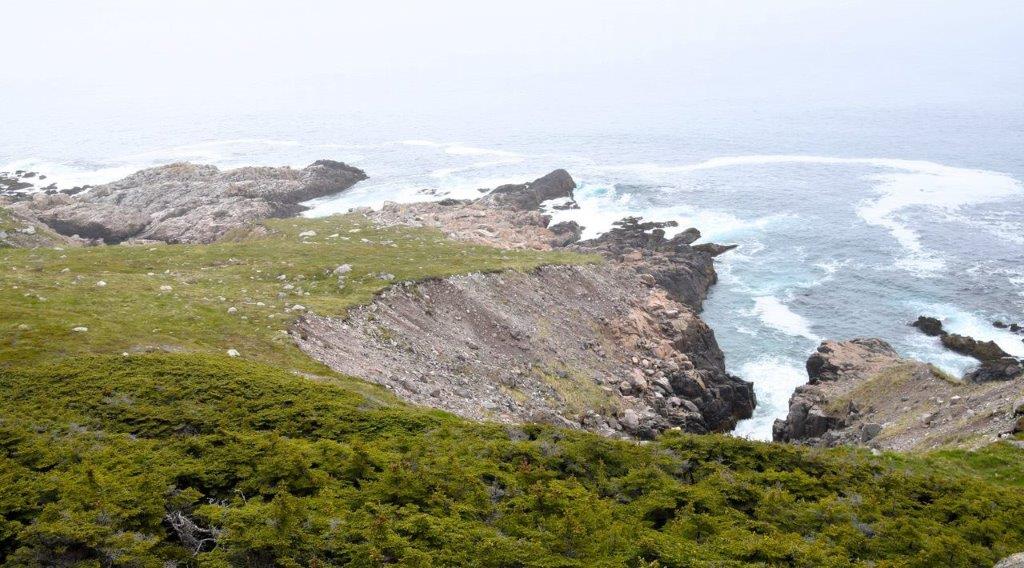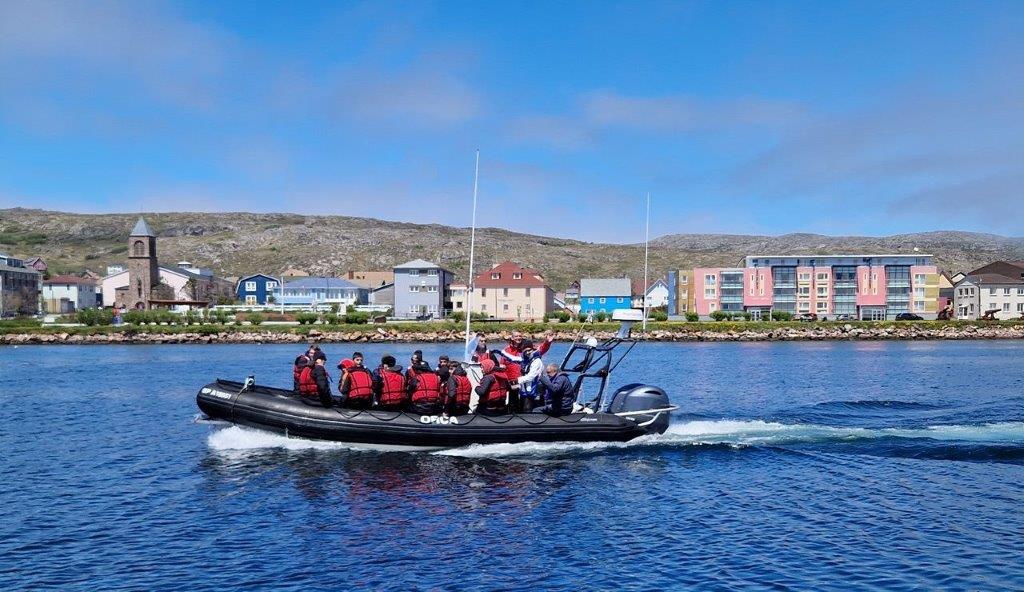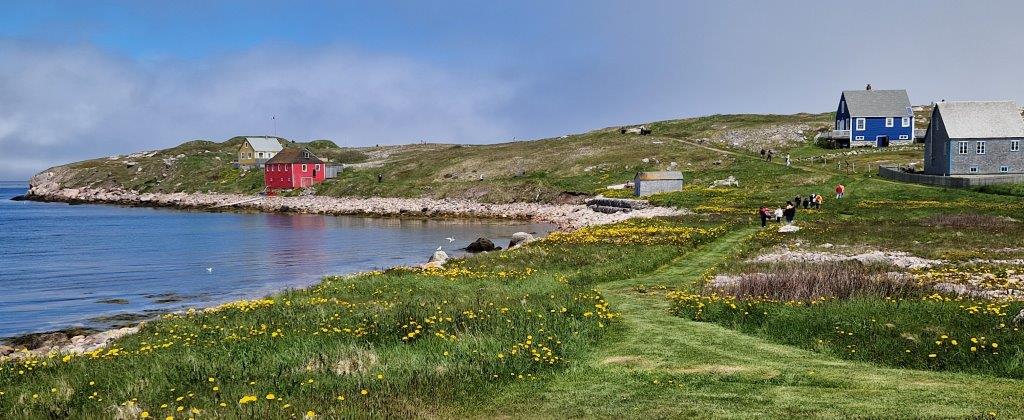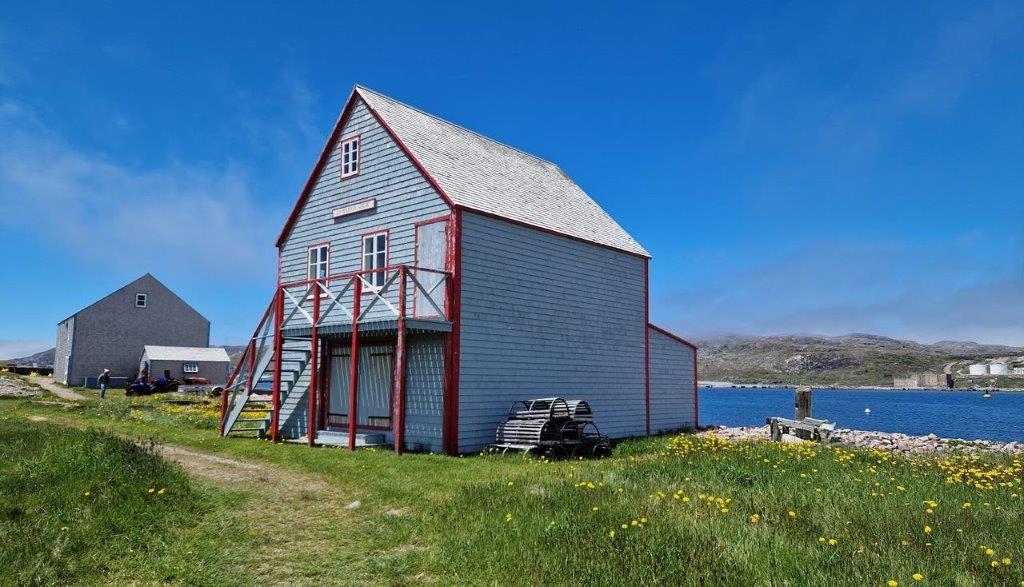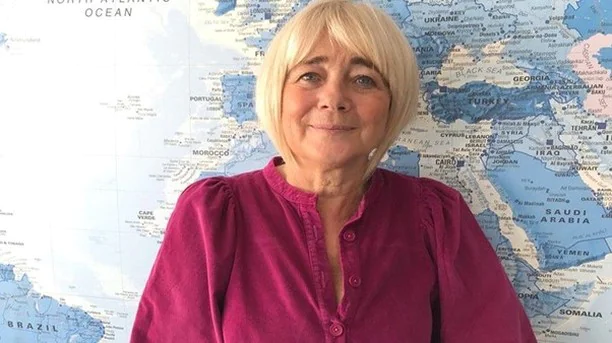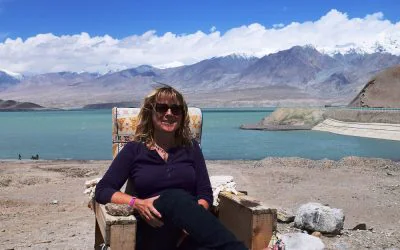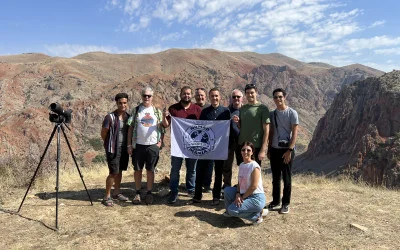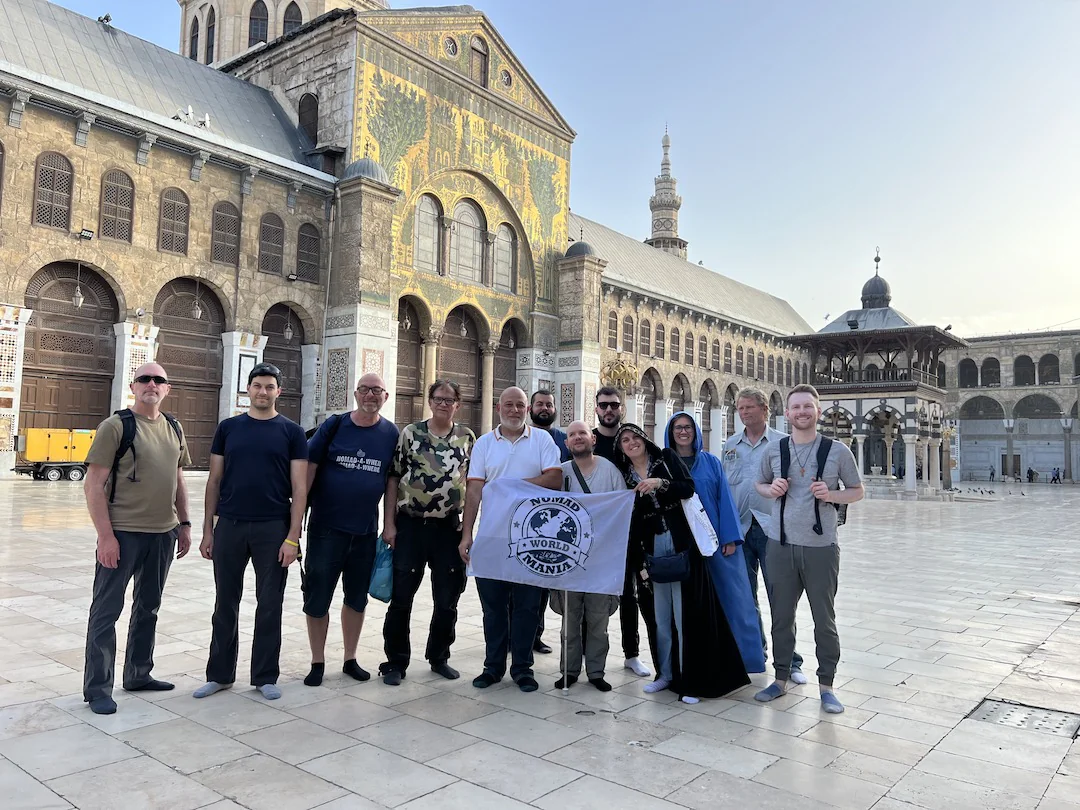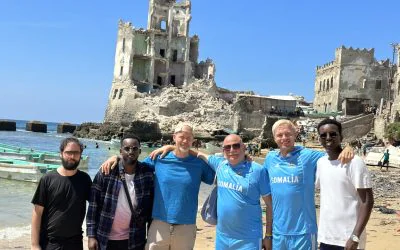This is a trip report by our valued Member Sue Rogers who kindly wrote this piece of material about recent travel to the French islands of Saint Pierre and Miquelon by the coast of Canada which are also a NomadMania region on itself with Miquelon being also a DARE place. Hope you will like it. Enter Sue…
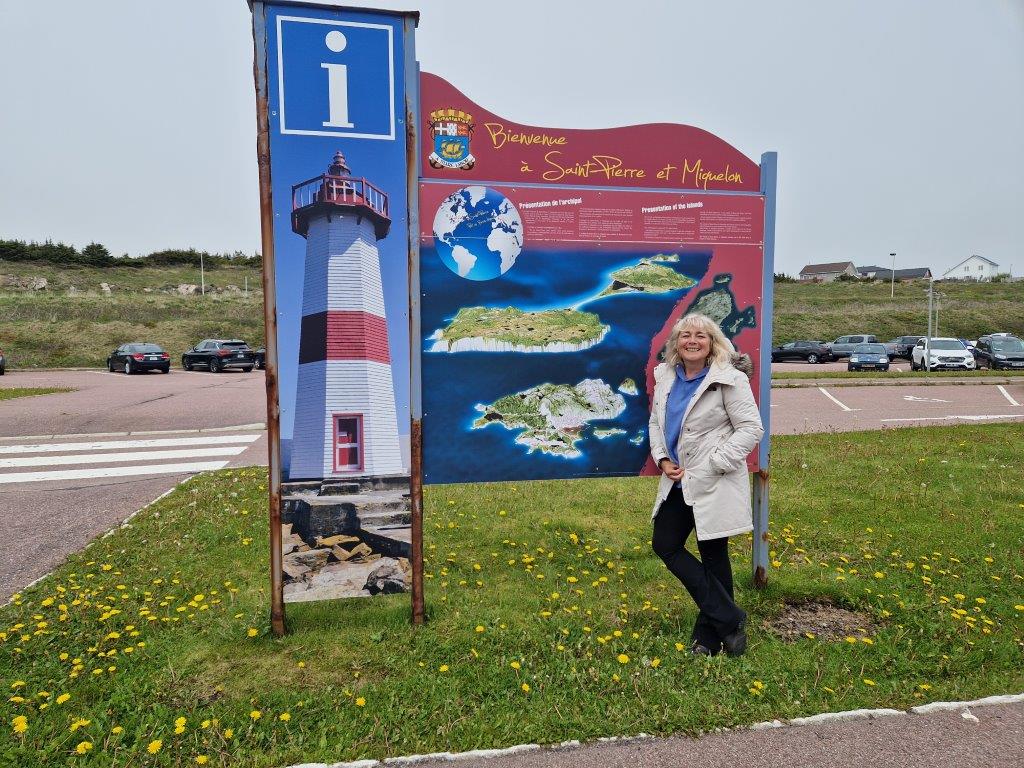
I’ve already been to Canada twice and I had no idea that this chunk of France, (I suppose it’s an exclave of Canada as it’s an archipelago). called Saint Pierre and Miquelon existed then. It only made it onto my Bucket List after I started looking at the NomadMania and Been checklists. It’s a UN+ destination, visited so far by 342 Nomads, as I write.
How to Get to Saint Pierre and Miquelon?
The only airline serving the islands is the locally based Air St Pierre (connecting with Nova Scotia, Newfoundland, Montreal or Paris).
It’s easy to book, online and I’m flying in from Halifax, Nova Scotia. It doesn’t help that my taxi driver, to the (very nice) Stansfield Halifax Airport, spends the whole journey telling me that he doesn’t fly, and never has done. It’s unnatural and, ‘Have I seen that Mayday programme on TV?….’
The alternative route was ferry from Cape Breton to Argentia on Newfoundland, anything from 12 to 28 hours on the boat, then drive to Fortune and get another 45 minute ferry to St Pierre. I decided to avoid that one. I’m an awful sailor and land transport was getting too difficult to arrange. No car hire places in the ports and no busses either, in these areas. Just shuttle taxis, if you can track them down, which isn’t always easy.
In the event, flying is very efficient. The little prop plane takes off early. All the seats not booked by people are loaded with cargo in large blue zip bags, properly seat-belted in place and the flight is almost entirely smooth.
St Pierre
St Pierre is smaller than Miquelon, (which is, in its turn joined to another island, Langlade, by a tombolo), but it’s the commercial and municipal hub and the airport is right next to St Pierre town, and the port. I’m met by smiling and aptly named Pierre, who whisks me off to Auberge St Pierre, on the outskirts of the town, nestling under what counts as a mountain here.
St Pierre and Miquelon – Facts and Factoids
- This archipelago of eight islands, population about 6,000, is an overseas collectivity of France.
- St. Pierre and Miquelon is a vestige of colonial New France, in the Gulf of St Lawrence, about 12 miles west of Newfoundland’s Burin Peninsula.
- Its residents are French citizens; the collectivity elects its own deputy to the French National Assembly and participates in senatorial and presidential elections. The currency is the Euro (although CAD are often accepted, if the proprietors are pushed).
- Saint-Pierre is French for Saint Peter (the patron saint of fishermen). The origin of the name Miquelon is less clear. It has been suggested that it is a Basque form of Michael.
- The time in St Pierre et Miquelon is GMT plus four, so out of line with and ahead of all of its American neighbours.
- Tourism is taking over from fishing as the mainstay of the economy.
St Pierre Town
St Pierre is the one and only town on St Pierre Island. It’s ten minutes walk to the town centre and the port from my lodging and it takes about an hour to wander the harbour and admire the lighthouse. It’s called Pointe aux Canons Lighthouse, for obvious reasons.
Then there’s the St Pierre Cathedral, the city hall, the mairie and the two tone timber boarded houses. The town spreads out from General Charles de Gaulle Square, currently occupied by a carousel. Further north, closer to my auberge, is the Fronton Zazpiak Bat – an arena for the traditional Basque sport of pelota.
The two main museums: L’Arche and Heritage, are still closed. Apparently, the season doesn’t start until June 14th. I thought you needed the money? It’s already busy here. Pierre tells me that he is booked solidly until October.
French or Not French?
More evidence of what a strange and wonderful world we live in, when one minute I’m in Canada and, not so many minutes later, I’m in France. And, this is indeed very French. Baguettes, croissants, galettes and coffee. Rigid lunch hours: 12 – 2 exactly. All the shops shut and the cafes serving the midday meal operate to those exact times. Dinner starts at seven. Six-thirty if you are lucky. You have to book in advance, ‘As we are so busy’, but the restaurants are two thirds empty, at seven, and customers drift in, as the evening wears on. French is spoken everywhere. The tricolore is prominent.
But also not so French. No typical French architecture, turrets, or chateau type roofs and windows. No pavement cafes or stylish window displays. It’s hard to distinguish boutiques from dwellings. Some of the restaurants and shops don’t even have their names outside. Maybe a menu. It’s too cold to sit outdoors most of the time and the locals know where everything is, I’m assuming. Perhaps it’s done to confuse any invaders.
The food, when you can get it, is also both French and non French. I booked dinner at the two most highly rated restaurants online: Le Feu de Braise and Le Petit Gravier (Little Gravel). Neither has the name displayed on the street. Le Petit Gravier just says restaurant. Le Feu has nothing on the fascia at all and is accessed via a staircase through two shut and unlabelled doors. Fortunately, a kind local helps me out.
The menus are in French. The ingredients are nearly all imported from Canada or France and the cooking oddly experimental. At Le Petit Gravier pannacotta of lobster is tasty, but surely this is a terrine? It’s lumpy. And scallops are perfectly cooked, but served with a very spicy sauce. They just about survive the experience. Le Feu serves me up overcooked steak. Overcooked steak – in France. The waiter doesn’t come anywhere near me again (it’s a busy place) and so, like a good Brit I just eat it up, without complaining.
Exploring St Pierre Island
Taxi driver Logan tells me he’s booked solid and he was working until 5 a.m,. as the night life is buzzing. (I’m hoping he doesn’t fall asleep.) Logan is taking me on a tour of the island. It takes an hour to drive slowly down every paved route here, stopping to take photos. The island is 24 kilometres wide.
It’s a very rare sunny day. I don’t need my coat. But the fog still rolls in, in waves, and it’s thick for the exact time of my taxi tour. Lakes full of trout, rocky beaches, impressive surfing waves, fishing boats (the traditional sailing dories are still around), an old fish processing warehouse. One small sandy beach at Savoyard. A tiny roadside waterfall. The locals fill up their water bottles from a pipe here. Even the toilets are quirky, like little rotund log cabins. Logan says that the houses are all painted different colours so that the fishermen knew where to come back to when they rolled home drunk, at the end of the day.
Paddocks with horses grazing. These are the beloved offspring of the only transport they used to have on the islands. Glimpses of Langlade, through the murk. Every summer (which Logan says means just August) the horses are shipped off to Langlade for a holiday, where they can roam freely. I’m told that both Miquelon and Langlade are wild and beautiful.
A Brief History of St Pierre and Miquelon
The first European explorers to the islands of St Pierre and Miquelon were the Portuguese (there were no permanent indigenous peoples there), in 1520. João Álvares Fagundes named them ‘The Eleven Thousand Virgins’. In 1536, Jacques Cartier claimed the islands, as a French possession, but they were not properly settled until the end of the seventeenth century.
They were ceded to the UK, as part of the Treaty of Utrecht, in 1713, but returned to France, along with coastal fishing rights, when all other North American French possessions were handed over to the British, under the terms of the 1763 Treaty of Paris. The British regretted this, when France entered the American Revolutionary War, on the side of the United States, and so, they briefly occupied the islands four more times, destroying fortifications and deporting colonists.
From 1816, after the defeat of Napoleon, the islands were almost abandoned, but seven ships brought 700 French settlers, mostly Basques, Bretons and Normans. The Normans were nicknamed Red Feet, as they used to scavenge bare foot for shell fish on the red beaches of Mont Saint Michel and their skin was stained. They were joined by some Newfoundlanders and struggled to make a living from fishing (mainly cod from the Continental Shelf).
The season was short, the work was hard and the rewards poor. Often women and children were drafted in to spread the cod, on the rocks, before artificial drying was introduced. Boats did not get engines until 1914. Fishing is one of the most dangerous professions and the waters round here, with treacherous rocks, wind and fog are dubbed The Mouth of Hell. Many died because their foghorns on their silent wooden sailing dories could not be heard. There have been 674 wrecks since 1816 alone. Hence all the lighthouses.
Smuggling brought in added income, during Prohibition, in the 1920s, when both Al Capone and The Peaky Blinders ran operations here. After Word War II, St Pierre et Miquelon became a French Overseas Territory. In a referendum, the inhabitants voted to preserve the status of an overseas territory, so it is not a constituent part of France, or of the EU.
Île aux Marins
I’ve read that the tourist must see, from St Pierre, is Île aux Marins (Mariners Island, known as Isle of Dogs, until 1931). You can see it across the channel from the harbour and it doesn’t look that exciting. But I’ve viewed all the main sights now, so I’m giving it a go. And it’s good weather to go to sea. I have to wait for the afternoon boat, as the ferry service closes for lunch, like everything else (including the tourist office).
Île aux Marins is probably the most memorable part of my visit. Utterly charming, surrounded by crystal clear water, mimicking the Caribbean, with its sapphire and turquoise swirls (but not its temperature, though there is one brave boy swimming). The sea contrasts beautifully with the grassy emerald of the island, almost entirely dotted with golden dandelions. It’s make your heart sing gorgeous, in the sunshine.
The paths are mown, for the most part, though in some areas the red granite and gravel of the islands is a little tricky to wobble across. It takes me a couple of hours to saunter round. It’s not only beautiful, it’s a living museum. The traditional houses have been reconstructed – some are summer homes (marked out by Privé signs, on the lawns). These used to be the homes of the cod fishing Red Feet, There are additionally, eight historic buildings.
There’s also a lighthouse (of course) at one end, a mound with the municipal buildings, church and cemetery in the centre and a fort at the other end, more cannons. Across another cove, from the fort, is the highest point, Cape Baudry (35 metres). The beach here is littered with rusty pieces of wrecked ships. The cemetery is accessed by a route lined with crosses, which, movingly, mark the World War II dead. Many of the islanders fought for the Free French. A quarter of those who went were killed. Although it’s gloriously sunny, the mist never departs entirely, rolling across in sheets, which hang above the bay, wrapping the island and weaving across it.
The French in St Pierre
Whilst I wait for the ten minute return crossing (the boat is called Little Gravel too), I’m chatting to different groups of French tourists. They’re very friendly. Perhaps they’ve caught it from the locals who are generally welcoming and who have already explained to me that they usually find people from mainland France to be miserable. We discuss ‘Alifax, with gay aplomb.
Miquelon
I didn’t factor Miquelon into this trip – it was yet another ferry ride away and I wanted to spend as much time as possible in Newfoundland (I flew onto there). But the inhabitants of St Pierre tell me that Miquelon is wild and great for hiking, even though most visitors miss it out. And it’s now a NomadMania DARE place. I shall have to go back….
Check out Sue’s profile on NomadMania
Read more about my Canada trip (and the rest of my travels ) at suetravels.com and consider following me on facebook and instagram.
